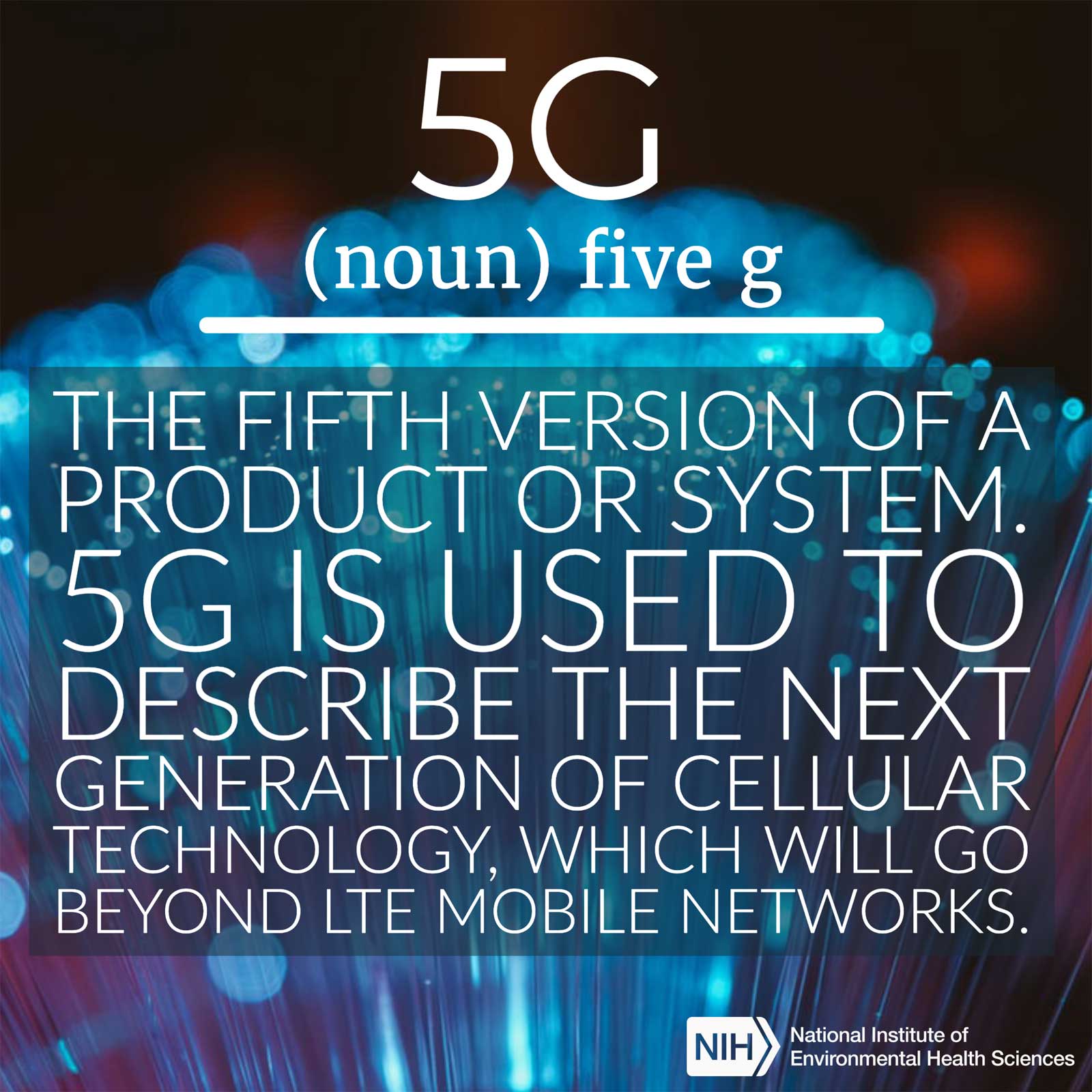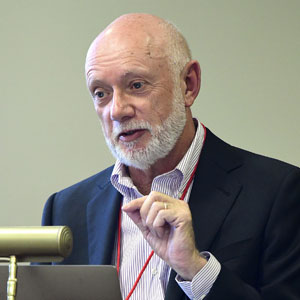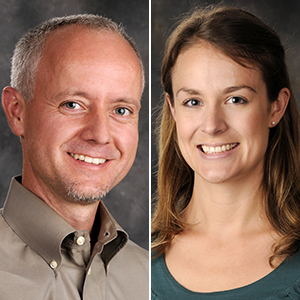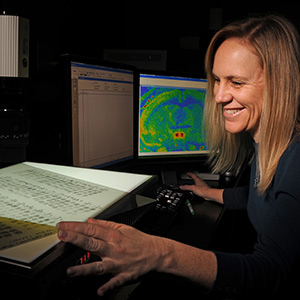Cell phones are used by 96% of American adults. With that extensive use and the need for more data at faster speeds, 5G — the latest generation of cellular technology — seems to be on everyone’s mind.
Environmental Factor sat down with Michael Wyde, Ph.D., a toxicologist in the National Toxicology Program (NTP), to learn more about 5G and cell phone radiofrequency radiation (RFR) research at NTP.
 Wyde works in the Toxicology Branch of the Division of NTP. (Photo courtesy of Steve McCaw)
Wyde works in the Toxicology Branch of the Division of NTP. (Photo courtesy of Steve McCaw)EF: What exactly is 5G technology?
MW: 5G is the fifth generation of cell phone technology that promises higher data transfer rates, lower network lag, and increased network capacity compared with previous generations.
2G and 3G cellular networks, which are predominately used for voice calls and texting, operate at specific frequencies between 800 and 1,900 megahertz (MHz). 4G and 4G-LTE networks, which include additional frequencies between 700 and 2,500 MHz, were developed to support increased data needs like streaming video, internet access, and file downloads.
Today’s cell phones use multiple antennas that allow them to function across 2G, 3G, and 4G platforms to deliver maximum geographic coverage, connectivity, and speed. 5G technology will use the same frequencies as the older technologies, but it will also feature higher RFR frequencies known as millimeter waves.
Those higher frequencies, which go up to 60,000 MHz, can rapidly transmit enormous amounts of data with increased network capacity. So, it is anticipated that as we move forward, wireless users will be exposed to a much broader spectrum of RFR frequencies.
EF: Will 5G increase cellular radiation levels?
MW: Given some of the issues I just mentioned, it is difficult to compare 5G to the previous generations of wireless networks. NTP scientists are still working to understand the impact of exposure to RFR on biological tissues, regardless of generation.
It is known that millimeter waves, like those used in 5G, do not travel as far and do not penetrate the body as deeply as does the RFR at the lower frequencies used in the current 2G, 3G, and 4G networks. Much of the absorption at higher frequencies occurs in the skin.
At lower frequencies, RFR has been shown to penetrate at least three to four inches into the human body. In our studies in rats, exposure to RFR at 900 MHz induced tumors in the heart, brain, and adrenal gland. However, RFR at the 5G millimeter wave frequencies would not penetrate deep enough to reach those tissues.
Additionally, since the higher frequencies in the 5G network reach shorter distances and do not penetrate physical barriers, substantially more transmitters and antennas are required to provide coverage to consumers. Therefore, the proximity of humans to the antennas may increase, which could potentially lead to higher exposures.
 The 5G network may require more transmitters and antennas, which could increase our exposure to cell phone RFR.
The 5G network may require more transmitters and antennas, which could increase our exposure to cell phone RFR.However, because there will be more antennas, the power levels of RFR for 5G may be lower than those currently used for 2G, 3G, and 4G. At this point, it is unclear exactly how human exposure to RFR will change. What is known is that while wireless consumers will continue to be exposed to the current frequencies, they will be exposed to the higher frequencies as well.
EF: How does NTP plan to study the health effects of 5G?
MW: NTP is evaluating the existing literature on the higher frequencies intended for use in the 5G network and is working to better understand the biological basis for the cancer findings reported in earlier studies on RFR with 2G and 3G technologies.
Additionally, work is ongoing to develop smaller RFR exposure chambers for short-term rodent studies that will take weeks and months to complete rather than years. The new exposure system will also be able to evaluate newer technologies in the telecommunications industry.
NTP also aims to repeat DNA damage studies in the smaller RFR exposure chambers and to identify biomarkers of damage from RFR exposure. The biomarkers would be measurable physical changes, such as molecular changes, that can be seen in shorter amounts of time than it takes to develop cancer and that might be predictive of the disease.
If scientists can better understand biological changes in animals, they will know more about what to look for in humans.
(Sheena Scruggs, Ph.D., is the digital outreach coordinator in the NIEHS Office of Communications and Public Liaison.)










